Hanwha Engineering & Construction (Hanwha E&C) completed the
Philippine Arena in Manila, the Philippine capital, late last month. It
is a multi-purpose indoor arena built across 74,000 square meters of
land. Its dome alone spans 45,948 square meters. It can accommodate up
to 51,000 people and is so far the largest domed indoor arena in the
world. Hanwha carried out the entire construction project, ranging from
design through to the actual building of the structure, which took 30
months to complete.
Korean construction companies are leading development projects in many countries of the world. They build not only factories, power plants and bridges but also concert halls and even a new city.
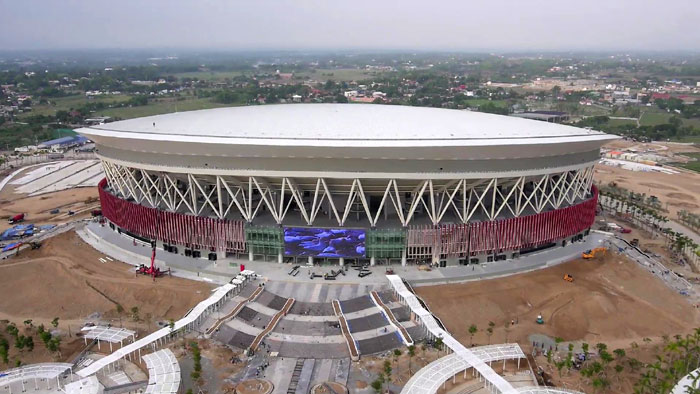
Hanwha received the spotlight when it won an order for the Bismayah New City construction project in Iraq this April. This project holds much significance as it is the first time a Korean construction firm has exported its new city construction technology to the world. It is also so far the largest single construction project overseas for any Korean firm, worth some USD 8 billion. Hanwha held a ceremony to mark the completion of the precast concrete (PC) plant on April 16 in Bismayah, and began the new city construction project soon afterward, with an initial goal of building 100,000 homes.
The final project will see a new city covering 1,830 hectares in Bismayah, about 10 kilometers southeast of Baghdad, the Iraqi capital. It involves roads, water and sewage facilities and new city construction works. It will take seven years to build a total of 839 10-story buildings and 58 apartment complexes. It is part of the Iraqi government’s development goals to build 1 million homes for its citizens over the next few years.
Hanwha will introduce the PC construction method by producing building materials, such as walls and pillars, from its own PC plant and assemble them on site. This method is suitable for building large scale houses, as it can produce high-quality building materials in a relatively short period of time. The total size of the PC plant Hanwha built is 660,000 square meters, the largest in the world. It uses 6,400 tons of concrete a day.
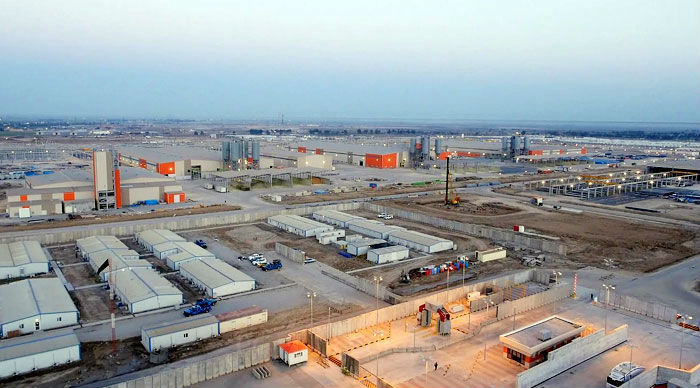
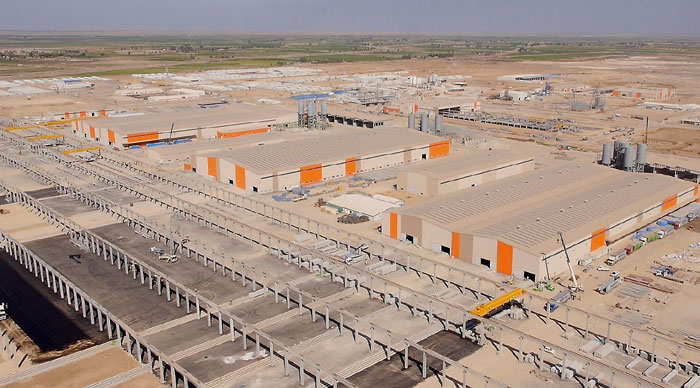
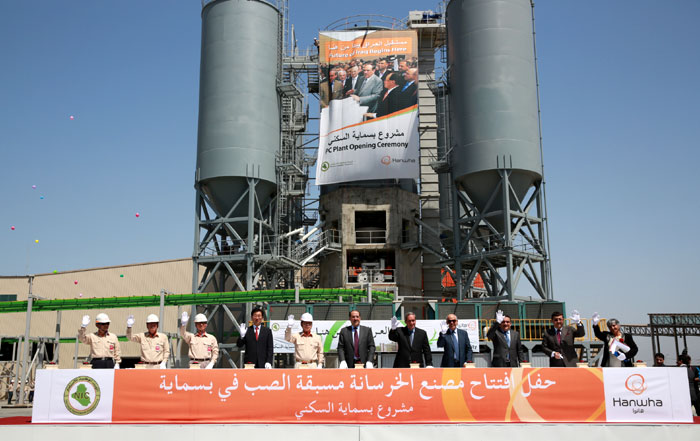
Hanwha is not the only Korean builder that is winning popularity overseas. Other leading Korean construction companies include Samsung Engineering and Construction (Samsung E&C), Hyundai Engineering and Construction (Hyundai E&C) and Doosan Heavy Industries & Construction. These firms have all been actively carrying out various types of construction projects, such as bridges, factories, power plants, roads and railroads, in Asia, Europe, Africa and Latin America.
Some of their main areas of expertise are building factories and power plants. In the case of desalination, Korea’s Doosan Heavy Industries & Construction has secured an unequaled place. Since 2000, Doosan has been the world`s largest maker of seawater desalination plants in terms of orders received, ranking first in the world, with a market share of 40 percent. The firm owns all the technology needed for the three stages of seawater desalination: multi-stage flashing, reverse osmosis and multi effect distillation.
In 2009, Doosan built the Al Shuaibah Seawater Desalination Plant and a 525mw power plant in Saudi Arabia. This seawater desalination plant can produce up to 450,000 tons of water a day, the largest single plant in the world. Using its own in-house technology, Doosan carried out the whole construction project, from design through to completion, and even included a trial run. Doosan has so far completed a total of 27 seawater desalination plant projects across the Middle East, including in Saudi Arabia, the United Arab Emirates, Kuwait, Oman and Qatar, all of which together can produce a total of 6.4 million tons of fresh water per day.
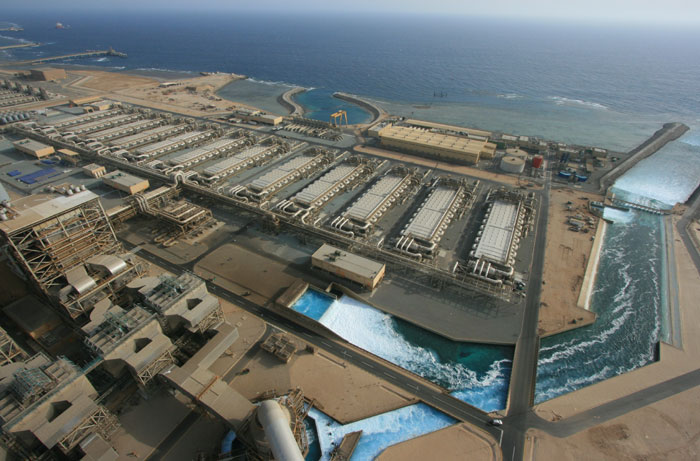
Moving away from factories and power plants, one of the most noticeable buildings that Korean firms have constructed is the Burj Khalifa. Constructed by Samsung E&C in 2011, Burj Khalifa is a 160-story building that includes a hotel, shops and residential facilities. The building is 828 meters high and is listed as the tallest building in the world in the Guinness Book of Records. Samsung was also involved in the construction of Taipei 101 and of Malaysia's Petronas Towers, which, along with the Burj Khalifa, are known as the world's three tallest buildings. It leads the world market for skyscrapers.
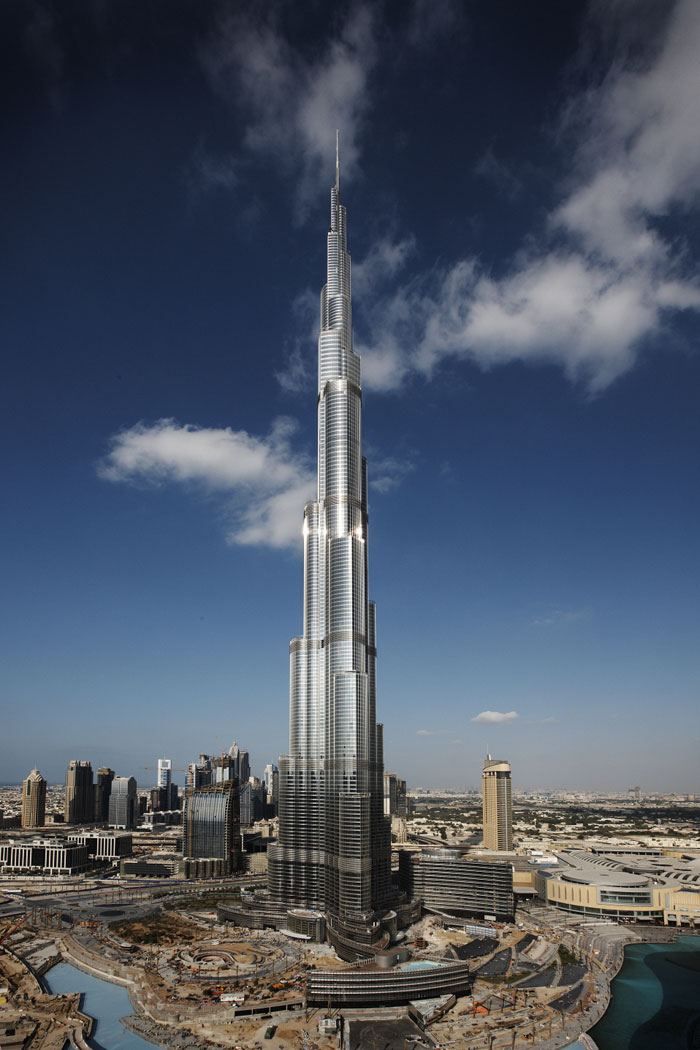 Earlier this month, the accumulated construction
orders of Korea’s largest construction firm, Hyundai E&C, exceeded
USD 100 billion. Recently, Hyundai has been making an effort to expand
its reach in Latin America. In February this year, the firm received an
order from Brazilian builder OAS to build the Chacao Bridge in Chile.
The project was placed by the Chilean Ministry of Public Works and is
worth USD 648 million. According to the project's specifications, the
Chacao Bridge will cross the Chacao Strait in Los Lagos, 1,000 kilometer
south of Santiago, the Chilean capital. Hyundai plans to build the
first-ever four-lane suspension bridge in the South American country.
Earlier this month, the accumulated construction
orders of Korea’s largest construction firm, Hyundai E&C, exceeded
USD 100 billion. Recently, Hyundai has been making an effort to expand
its reach in Latin America. In February this year, the firm received an
order from Brazilian builder OAS to build the Chacao Bridge in Chile.
The project was placed by the Chilean Ministry of Public Works and is
worth USD 648 million. According to the project's specifications, the
Chacao Bridge will cross the Chacao Strait in Los Lagos, 1,000 kilometer
south of Santiago, the Chilean capital. Hyundai plans to build the
first-ever four-lane suspension bridge in the South American country.
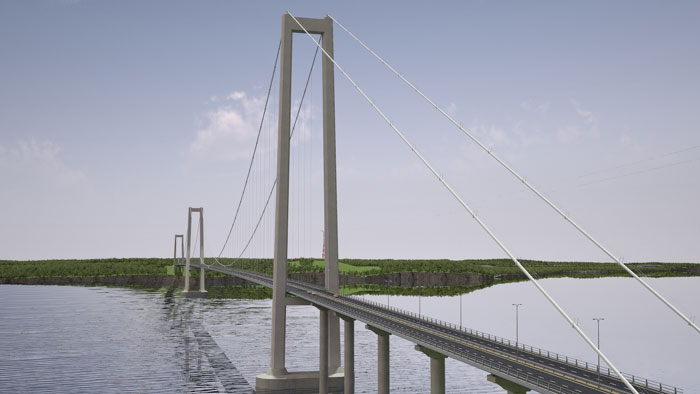
From January this year through to May 27, Korean builders received more than USD 30.9 billion worth of overseas construction orders, reported the Ministry of Land, Infrastructure and Transport and the International Constructions Association of Korea on May 28. This is the first time since 2010 that the total amount of overseas construction orders surpassed USD 30 billion within the first half of the year. By sector, large factories and power plant orders accounted for almost 90 percent of the total orders, and are together worth more than USD 26.5 billion. By region, the Middle East took more than 80 percent of the total number of orders, worth more than USD 24.5 billion. Asia was the second largest region, with orders worth some USD 4.5 billion, followed by Latin American and Africa, with orders worth USD 1.1 billion and 0.5 billion, respectively.
Korean construction companies are leading development projects in many countries of the world. They build not only factories, power plants and bridges but also concert halls and even a new city.

Hanwha E&C completed the
Philippine Arena in Manila, the Philippines, this May. It is the largest
multi-purpose indoor arena in the world. (photo courtesy of Hanwha
E&C)
Hanwha received the spotlight when it won an order for the Bismayah New City construction project in Iraq this April. This project holds much significance as it is the first time a Korean construction firm has exported its new city construction technology to the world. It is also so far the largest single construction project overseas for any Korean firm, worth some USD 8 billion. Hanwha held a ceremony to mark the completion of the precast concrete (PC) plant on April 16 in Bismayah, and began the new city construction project soon afterward, with an initial goal of building 100,000 homes.
The final project will see a new city covering 1,830 hectares in Bismayah, about 10 kilometers southeast of Baghdad, the Iraqi capital. It involves roads, water and sewage facilities and new city construction works. It will take seven years to build a total of 839 10-story buildings and 58 apartment complexes. It is part of the Iraqi government’s development goals to build 1 million homes for its citizens over the next few years.
Hanwha will introduce the PC construction method by producing building materials, such as walls and pillars, from its own PC plant and assemble them on site. This method is suitable for building large scale houses, as it can produce high-quality building materials in a relatively short period of time. The total size of the PC plant Hanwha built is 660,000 square meters, the largest in the world. It uses 6,400 tons of concrete a day.

The construction site at Bismayah New City in Iraq. (photo courtesy of Hanwha E&C)

The precast concrete plant at the Bismayah New City construction site in Iraq. (photo courtesy of Hanwha E&C)

Iraqi Prime Minister Nouri
al-Maliki (center), high-ranking Iraqi officials, the Korean Ambassador
to Iraq, Cho Jung-won, and representatives from Hanwha E&C celebrate
the completion of the precast concrete plant in Bismayah, Iraq, on
April 16, 2014. (photo courtesy of Hanwha E&C)
Hanwha is not the only Korean builder that is winning popularity overseas. Other leading Korean construction companies include Samsung Engineering and Construction (Samsung E&C), Hyundai Engineering and Construction (Hyundai E&C) and Doosan Heavy Industries & Construction. These firms have all been actively carrying out various types of construction projects, such as bridges, factories, power plants, roads and railroads, in Asia, Europe, Africa and Latin America.
Some of their main areas of expertise are building factories and power plants. In the case of desalination, Korea’s Doosan Heavy Industries & Construction has secured an unequaled place. Since 2000, Doosan has been the world`s largest maker of seawater desalination plants in terms of orders received, ranking first in the world, with a market share of 40 percent. The firm owns all the technology needed for the three stages of seawater desalination: multi-stage flashing, reverse osmosis and multi effect distillation.
In 2009, Doosan built the Al Shuaibah Seawater Desalination Plant and a 525mw power plant in Saudi Arabia. This seawater desalination plant can produce up to 450,000 tons of water a day, the largest single plant in the world. Using its own in-house technology, Doosan carried out the whole construction project, from design through to completion, and even included a trial run. Doosan has so far completed a total of 27 seawater desalination plant projects across the Middle East, including in Saudi Arabia, the United Arab Emirates, Kuwait, Oman and Qatar, all of which together can produce a total of 6.4 million tons of fresh water per day.

Doosan Heavy Industries &
Construction built the Al Shuaibah Seawater Desalination Plant and a
525mw power plant in Saudi Arabia in 2009. (photo courtesy of Doosan
Heavy Industries & Construction)
Moving away from factories and power plants, one of the most noticeable buildings that Korean firms have constructed is the Burj Khalifa. Constructed by Samsung E&C in 2011, Burj Khalifa is a 160-story building that includes a hotel, shops and residential facilities. The building is 828 meters high and is listed as the tallest building in the world in the Guinness Book of Records. Samsung was also involved in the construction of Taipei 101 and of Malaysia's Petronas Towers, which, along with the Burj Khalifa, are known as the world's three tallest buildings. It leads the world market for skyscrapers.

Samsung E&C built the Burj
Khalifa in 2011. The building is listed as the tallest building in the
world in the Guinness Book of Records. (photo courtesy of Samsung
E&C)

An artist's impression of the
Chacao Bridge in Chile. Hyundai received the order to build this bridge
in February. (Image couretsy of Hyundai E&C)
From January this year through to May 27, Korean builders received more than USD 30.9 billion worth of overseas construction orders, reported the Ministry of Land, Infrastructure and Transport and the International Constructions Association of Korea on May 28. This is the first time since 2010 that the total amount of overseas construction orders surpassed USD 30 billion within the first half of the year. By sector, large factories and power plant orders accounted for almost 90 percent of the total orders, and are together worth more than USD 26.5 billion. By region, the Middle East took more than 80 percent of the total number of orders, worth more than USD 24.5 billion. Asia was the second largest region, with orders worth some USD 4.5 billion, followed by Latin American and Africa, with orders worth USD 1.1 billion and 0.5 billion, respectively.
Comments
Post a Comment